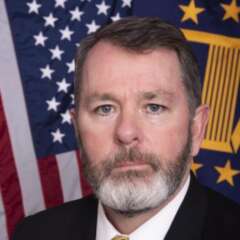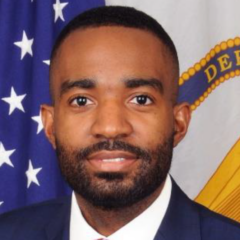Speakers
4 speakers
Date & Time
Oct 20, 2021 2:00 p.m. ET
Webinar
Date: On Demand
Duration: 1 hour
Cost: No Fee
Description
Over the past 20 months, the pandemic and major cyber breaches have forced agencies to rethink just about everything they do with technology and process.
The major takeaway for many organizations is the need to modernize their cybersecurity approach while also ensuring employees can do their job remotely or in a hybrid environment.
The Biden administration’s May cyber executive order highlighted just how agencies and industry alike need to address these ongoing cyber and remote work challenges.
These include everything from moving to a zero trust architecture to ensuring the supply chain is secure to addressing cloud security requirements.
All of these efforts also will further agency IT modernization initiatives to make remote and hybrid work environments better and safer.
Agencies must continue to digitally transform to deliver a resilient and agile technology infrastructure that provides continuous business value.
It’s clear that federal leaders can use their experience over the last 20 months to continue to reduce costs and complexities and move further into the cloud and other modern approaches to technology.
Beau Houser, the chief information security officer at the Census Bureau, said cybersecurity has been a key piece of the bureau’s IT modernization effort.
“We’ve got to get cyber out of your face and into the abstract as elements of the technology infrastructure. That’s what we’re working really hard to do and make sure it’s a really good user experience,” Houser said on the discussion Driving IT Modernization through Cybersecurity sponsored by Citrix Systems. “If you get it right using zero trust, which offers not only high levels of security, but really robust flexibility, I think it’s easy to show the benefits of changing the model toward that architecture.”
The focus on zero trust across the government through the May executive order and now from the draft strategy the Office of Management and Budget issued in September is helping agencies better envision their future technology infrastructure.
Jose Arvelo, the chief technology officer for federal at Citrix Systems, said for agencies to onboard new services quickly, the cloud and zero trust ensures their end users are the top priority.
“Our customers are embracing scalability. They want the ability to be able to expand their environments and contract as users are needed,” he said. “The employee experience is probably much more important than it’s been in the past. You have folks that are entering the workforce who are digital natives and they’ve got these expectations to have a great user experience no matter where you are. I think the other thing about employee experience that I see many agencies put a focus on is collaboration.”
Dovarius Peoples, the chief information officer at the U.S. Army Corps of Engineers, said with employees and offices located across the country and internationally, ensuring access to a modern, secure collaboration platform is critical.
“When you think about zero trust and a lot of technical things, you think about authentication and access. So when you think about authentication and access, that’s when all these nice terminologies or acronyms such as identity and access management or IDAM and many other things come into play,” he said. “That’s what we are really trying to do, ensure those systems and data are protected. It’s what keeps us up at night. Ultimately, we’re looking to deliver to the end user a capability or solution and services that can support them downstream. Zero trust is a methodology that also can be operationalized to really help you see the value and benefit of those services to the end users.”
Chris Cleary, the principal cyber advisor for the Department of the Navy, added all of these challenges around collaboration, remote work and security will continue to grow with the Chief of Naval Operations directing the Navy to figure out how to get 20% of its force working from home permanently.
“Zero trust is a construct, there’s not a product, there’s not an individual thing you can go get to create a zero trust environment. It’s dependent on a lot of other things like having a strong identity strategy to really lead toward a strong zero trust environment. The thing I am most encouraged about the zero trust discussion is that probably for the first time in a long time we’re all using at least the same fundamental language. We’re all going to say that it’s a zero trust construct, we are all going to try to march toward that,” he said. “My only cautionary tale is this is not the last security architecture we’re ever going to be discussing. If you remember two years ago, it was comply-to-connect and before that it was layered defense and before that it was go buy intrusion detection, malware, email scam, tools. So as the adversaries continue to evolve, we will continue to evolve.”
Learning objectives:
- Explore the IT modernization journey
- Assess zero trust architecture and implementation
- Evaluate how to effectively modernize the work environment
This program is sponsored by 
Complimentary Registration
Please register using the form on this page or call (202) 895-5023. Please note, you may need to re-enter your registration information if you previously registered for this webinar and returned to page after clearing your cookies or using a private browser.
Speakers

Christopher Cleary
Principal Cyber Advisor, Department of the Navy

Dovarius Peoples
Chief Information Officer, U.S. Army Corps of Engineers

Beau Houser
Chief Information Security Officer, Census Bureau

Jose Arvelo
Chief Technology Officer, Federal, Citrix Systems
Please register using the form on this page.
Have questions or need help? Visit our Q&A page for answers to common questions or to reach a member of our team.
